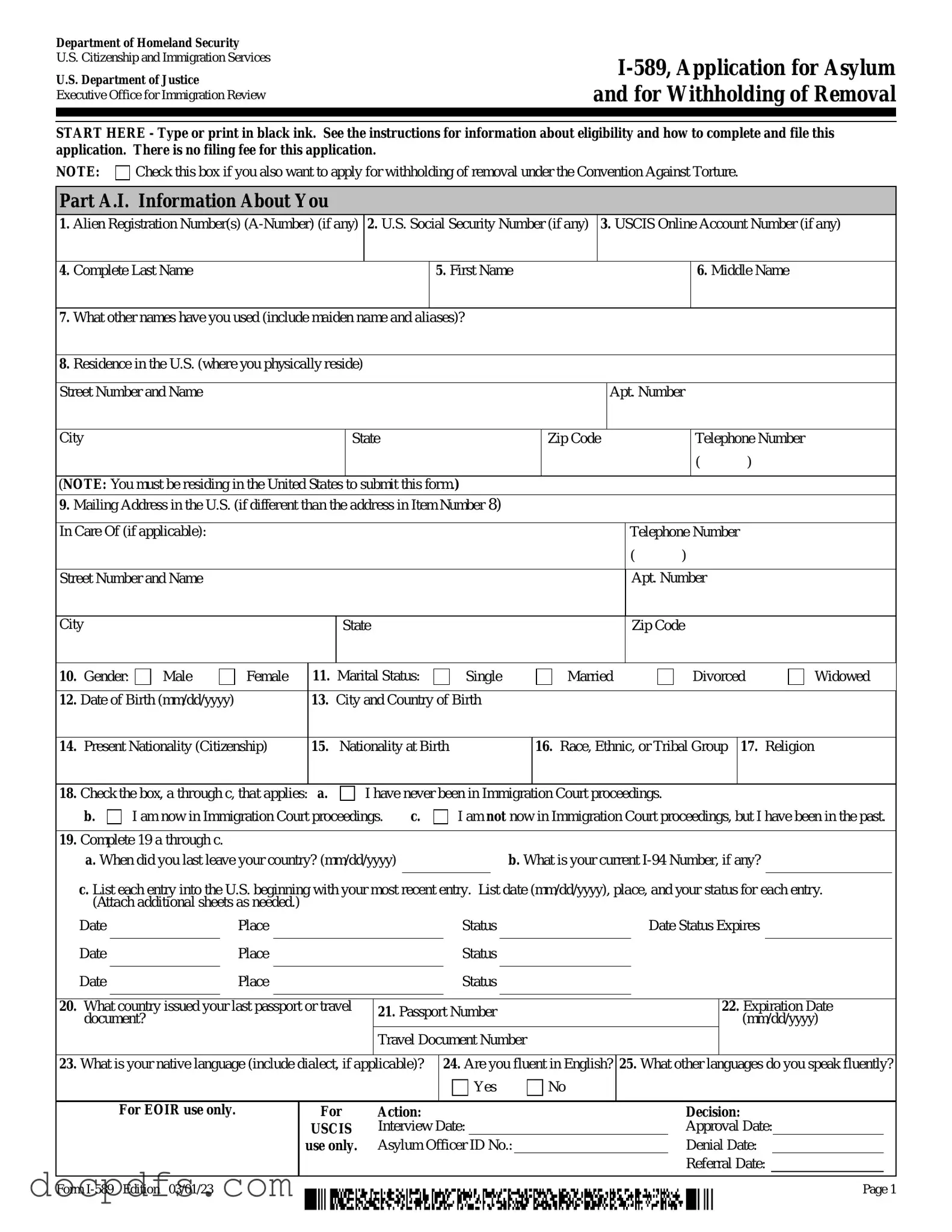The USCIS I-589 form is an application for asylum and for withholding of removal. It allows individuals who are already in the United States to apply for protection based on a well-founded fear of persecution in their home country. This form is crucial for those seeking refuge due to threats related to race, religion, nationality, political opinion, or membership in a particular social group.
Any person who is physically present in the United States and has a credible fear of persecution may file the I-589 form. This includes individuals who entered the country legally or those who arrived without inspection. It's important to note that there are specific deadlines for filing, especially if you are applying for asylum. Generally, you must submit your application within one year of your arrival in the U.S., unless you qualify for an exception.
The I-589 form requires detailed information about your identity, your family members, and the reasons you are seeking asylum. Key sections include:
-
Your personal information, such as name, address, and date of birth.
-
Details about your immigration history.
-
An explanation of the persecution you fear, including specific incidents and threats.
-
Information about your family members who may also be applying for asylum.
Providing accurate and comprehensive information is essential for your application to be considered.
You can submit the I-589 form either by mail or in person at a USCIS office. If you choose to mail your application, ensure that you send it to the correct address specified by USCIS for asylum applications. Double-check that you include all required documentation, such as personal statements and evidence supporting your claims. If you prefer to file in person, you may need to schedule an appointment with USCIS.
After submission, USCIS will review your application. You may be scheduled for an interview where you will explain your case to an asylum officer. This interview is a critical step in the process, as it allows you to present your story and provide any additional evidence. Following the interview, you will receive a decision regarding your application. If approved, you may be granted asylum status. If denied, you may have options to appeal the decision.
Yes, you can include your spouse and children on your I-589 application. This is known as derivative asylum status. If you are granted asylum, your family members included in the application may also receive asylum status. However, they must be listed on the form and meet certain eligibility requirements. It’s advisable to provide complete and accurate information about each family member to ensure a smooth application process.
